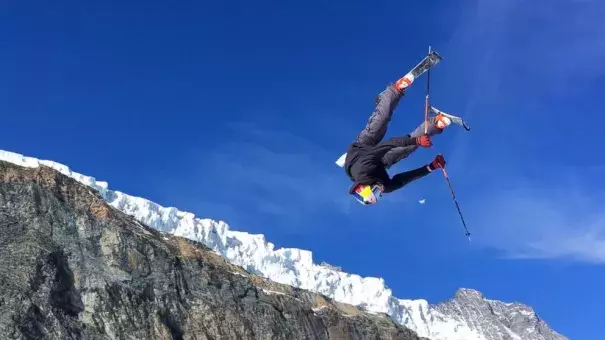Climate change hits Winter Olympic preparation

The athletes' half-hour commute in the Swiss Alps — up two gondolas, then through a tunnel in the world's highest underground train to a glacier at 11,000 feet — served up daily grim reminders that global warming is threatening their line of work.
After exiting the train, they squelched through a field of grayish mud to reach shrinking snowfields scarred by new crevasses. Occasionally, they heard the sharp roars of glacial ice breaking off in monster chunks, then echoing across the peaks where they trained jumps, tricks and turns for the Pyeongchang Olympics. Most days, they basked in brilliant, snow-melting sunshine that bathed the whole scene in deceptive beauty.
Another subtle but telltale indicator of climate change's disruptive impact on winter sports: Many athletes — here 5,000 miles away from the Rockies and 3,500 miles from the Green Mountains of New England — had the letters "USA" emblazoned on their jackets. Americans once had little need to swap continents to guarantee offseason access to snow. But warming is forcing athletes to hunt farther from home for wintry conditions, particularly just months away from an Olympics.
"Without the snow and the cold in the places in the States where it's normally cold, we have to travel over here and find a place on a glacier to get a couple of jumps off," said Jon Lillis, world champion in aerials skiing. "Something that terrifies every winter athlete daily is the fact that the conditions are not as good as they used to be. You see videos of people skiing on glaciers back in the '80s and '70s, and half of that glacier doesn't even exist anymore ."
Last year, the aerials team stopped water training at its headquarters in Park City, Utah, in mid-October, then sat and waited a month for snow that came late to the mountain that hosted the Winter Games 15 years ago. The World Cup season began in China, and the Americans were forced to travel there not having set foot on snow in months. The results, not surprisingly, were dismal: not a single podium and only one finish in the top 5.
Lesson learned: This season, they uprooted to glaciers at Saas-Fee, Switzerland, and Ruka, Finland, for autumn training needed to be competitive at February's Winter Games in South Korea.
The hunt for offseason training spots like these is increasingly a scramble, and not just for the Americans. The hellishly named "Lucifer" heat wave that baked Europe in July and August wreaked havoc on teams' schedules. Canadian skicross racers had to cancel plans to train on Italy's Stelvio glacier that turned a sickly gray, rerouting to Mount Hood, Oregon, instead. Canadians endured issues elsewhere, scrubbing a planned summer training trip to Argentina because of hostile weather and extreme winds.
...
The growing frequency of warm winters has, indeed, hurt the financial health of the industry, including ski resorts that form the backbone of the recreational side of the sport. A study commissioned by the Natural Resources Defense Council and the athletes' group Protect Our Winters found that skier visits in New Hampshire were 17 percent lower and ski resort revenue was $54 million less in the "low-snow" winters of 2001-02 and 2006-07, as compared with higher snowfall winters of 2007-08 and 2008-09. The differences between low- and high-snow seasons in Colorado were 8 percent in visits and $154 million in revenue.


